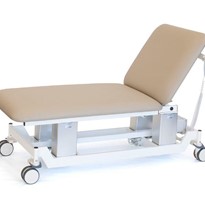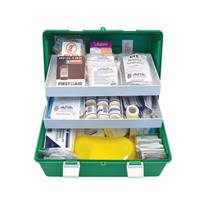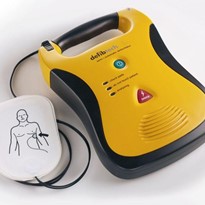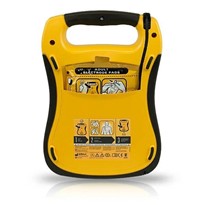The infections, which include urinary tract, staph, surgical site and respiratory infections in stroke patients, can lead to death in patients who are already sick and have weakened immune systems.
Our research, published today in the Australian peer-reviewed journal Infection, Disease and Health, analysed studies on hospital-acquired infections in Australia from 2010 to 2016.
Australia does not undertake surveys of the prevalence of infections in hospital, nor does it have a national surveillance system that collects and reports data on hospital-acquired infections. We are one of the only countries in the OECD that lacks such basic information.
It is well recognised that surveillance of infection is the cornerstone of infection prevention. Yet this is essentially absent at a national level. Given the number of hospital-acquired infections each year, and increasing resistance to antibiotics, investment and initiatives in infection prevention and control remain critical at all levels of government and in hospitals.
The risk of going to hospital
Imagine you were heading out tonight. On the way home, you decide to catch public transport. You are about to hop onto a bus when the driver stops you and says:
I better tell you, there is a 6% chance we will have an accident on the way home. It could be minor, or you could die.
What would you do? Many people would likely thank the bus driver, not catch the bus and look for an alternative.
But now imagine you want to know what the risk of infection in a particular hospital is. This is a pretty basic question, but unfortunately, while many countries can answer it, we can’t. In Europe for instance, 6% of patients have an infection acquired in hospital.
Many of these hospital-acquired infections that occur as a result of a health-care intervention make patients sicker and require ongoing treatment, while others may be life-threatening.
Everyone is of course susceptible to infection, but patients receiving health care are often more at risk. This is because patients may be having procedures such as surgery, receiving treatment that suppresses the immune system or have other existing medical conditions.
Patients often don’t have a choice about going to hospital, unlike choosing not to catch a bus. This places even more onus on hospitals and health-care facilities to reduce the risk of infection.
What infections could you get?
Our review of the literature found between 2010 and 2016, there were 83,096 hospital-acquired infections in Australia every year. But given the lack of or incomplete data on common infections such as pneumonia, which altogether missed up to 50-60% of infections, we calculated the incidence of hospital-acquired infections in Australia may be closer to 165,000 per year.
Of these, there are an estimated 71,000 urinary tract infections and 4,900 cases of infection with the bacteria Clostridium difficile, which causes symptoms such as diarrhoea, fever, nausea, and abdominal pain. More than 1,100 cases of Staphylococcus aureus (golden staph) infections were also estimated to occur.
The latter is the only infection for which data is collected and reported on nationally. Despite being less common, blood stream infections are associated with a death rate of 20%.
Other infections not only contribute to sickness and death, but place pressure on the health-care system by patients staying longer in hospital and consuming resources. Health-care associated urinary tract infections have been estimated to use approximately 380,600 extra public hospital bed days each year in Australia.
While not all hospital-acquired infections are preventable, many are. This study suggests 65-70% of catheter-associated bloodstream infections and catheter-associated urinary tract infections can be prevented.
Infections occur when microorganisms are introduced into a part of the body that would not normally have them. For example, bacteria in a wound, in the blood stream or in the bladder, might cause an infection.
In health-care settings, microorganisms - that are a normal part of the human body - are often transferred on the hands of health-care workers and can be found in the patient environment. Evidence suggests patients admitted to a room previously occupied by a carrier of bacteria that has become resistant to drugs have a significantly higher risk of acquiring that bacteria.
This demonstrates the role of the hospital environment in infection transmission and infers that current cleaning practices in hospital fail to reduce the risk of infections. Cleaning is as fundamental as hand hygiene in the prevention of disease causing organisms, especially in light of growing resistance to antibiotics and difficult-to-treat superbugs. Surveillance of infection is one way we can continue to observe the effectiveness of cleaning in conjunction with other prevention initiatives.
We need a national strategy
Recently, Deakin University announced their researchers would conduct the first infection survey of Australian hospitals in 30 years. This is not funded or organised by government, but rather a philanthropic grant.
Understanding the number and type of infections is critical to decision making, setting policy direction and evaluating the effect of interventions. It’s quite remarkable a major patient safety issue in hospitals lacks such basic transparent data.
The burden and impact of hospital-acquired infections is set to increase with the rise of resistance to antibiotics. Treatment of infection is getting more difficult and this is set to continue. Studies from Europe and the US suggest the most common hospital infections are pneumonia, urinary tract infections and those at the surgical site. In Australia there is no data on the incidence or prevalence of health-care associated pneumonia.
There has been considerable work done in infection prevention in Australia, including a national hand hygiene initiative and a national strategy to address resistance to antibiotics. The latter is supported by millions of dollars in government grants to establish centres of research excellence focusing on resistance.
However, a major gap still remains - a coordinated national hospital-acquired infections surveillance program. Such a program is needed so interventions can be appropriately planned and evaluated.






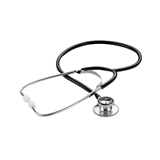
-160x160-state_article-rel-cat.png)






